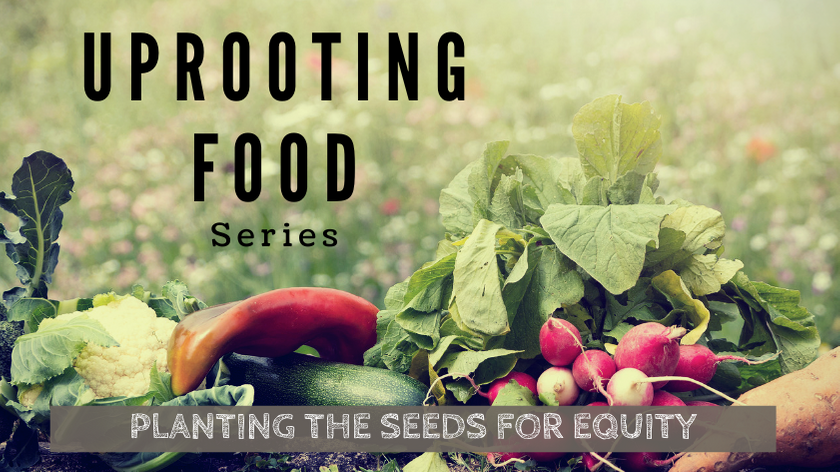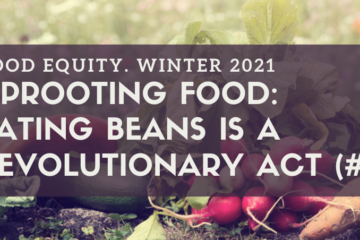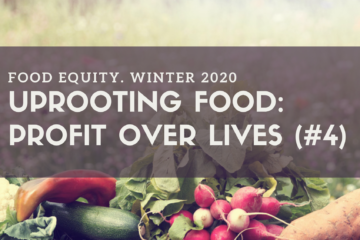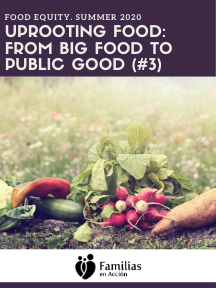
Imagine a world…
- Where every person in every community has equal access to food that we enjoy and sustains us
- Where food workers are guaranteed safety and respect as the providers of life giving sustenance
- Where owning and working our own soil is an attainable dream
- Where systems of food sales and distribution are based on health for all and not on profit for a few
- Where our political and economic structures protect food as the human right that it is.
PEOPLE ARE HUNGRY
According to Feeding America, before the coronavirus pandemic, 35 million people in the United States experienced hunger. More than 10 million of those were children. Because of the pandemic millions of people are without stable employment and are less able to provide for their families. The number of people experiencing food insecurity, at this moment, is projected to jump to 50 million. 17 million of those are children.
FOOD IS A HUMAN RIGHT
The pandemic has forced us to see parts of our country that make us uncomfortable, things that were “hidden” to many are now in front of us all. We have seen how interconnected we all are—how inequities for some ultimately impact the whole. We are in a crisis and out of crisis can come change.
The “Food Movement” had already been brewing as various groups globally have been examining the food systems from production through distribution to the table. There are different definitions for the movements generally identified as “food justice” and “food sovereignty.” Each identifies the layers and layers of structures that have built and maintain inequities along the line. They have in common two important tenets:
- Food is a human right.
- Food justice can come only through racial, social, and economic justice.
AN ARTIFICIAL CHOICE
Each part of the food movement focusses on points in the system to address—some aim to provide immediate relief from hunger and others want to provide long term opportunity for input and agency of communities who have been disenfranchised along the way by long standing institutions. Certainly this is not an either/or choice but a yes/yes.
We need programs like SNAP, food banks, local access, and urban gardens to get food immediately and dependably to the mouths in hungry families. Nothing positive can happen when individuals are hungry. But we cannot stop there. We must continue to feel the tension, and not be placated by the good feeling that comes from good effort. We cannot separate hunger from poverty and cannot separate poverty from institutionalized racism. We cannot separate lack of access to healthy food from the economic system which allows choices and prices to be controlled by Big Food corporations and the USDA subsidies and loans.
WORKING FOR FOOD EQUITY
There are programs that recognize the need to do both at once, that see solutions in a continuum. An example is the Northwest Harvest program in Seattle, Washington that has changed its operation from a standard foodbank where people stand in line to be given what is available to a Community Co-op shopping experience where families shop for free for what they want and need. Participants are actively sought to give input about what would work best—which languages for signage, which foods are culturally desired, what hours of operation make for easy access. Recognizing that food is only one need within poverty and that time is a limited resource, other social service resources are available at off hours and on the spot. Because participant input works here and stomachs are full, people are experiencing the power of their voices.
Familias en Acción in Portland, Oregon developed Abuela, Mama Y Yo as a tool to educate the whole family about health and nutrition across generations and to build advocacy skills for food equity. With each lesson comes encouragement to advocate for themselves and their community. With the pandemic Promotoras de Salud/Community Health Workers quickly pivoted to getting food out to people. The sense of personal power is a growing ground for activists.
Viva Farms is a nonprofit farm-business incubator in the Skagit Valley that supports aspiring and limited-resource farmers. Through a number of innovative partnerships—with Washington State University and Skagit Valley College for education, PCC Farmland Trust to support farmland acquisition, and others—Viva Farms and programs like it are bringing new farmers to the land in Northwest Washington.
There are many examples of such tactics but we know that no ONE tactic can make a difference unless it addresses a permanent change in the whole system. We must continually ask ourselves: how can this effort be embedded into long range planning? How can these positive effects become institutionalized?
EQUITY LENS
The history of inequity in our country from Native land grabs to slavery is not a pretty picture. We like to think of those as past issues, yet we know that current institutions continue to support the strength of the few on the backs of the many. Hunger is a symptom of poverty, poverty that is a symptom of lack of power and structural racism. When changing old policies or making new ones, the question of equity must be front and center if power is to be equalized.
An “equity lens” is a way of examining the way things are and can guide decisions about making changes. It can be a tool that includes a series of questions or issues to consider that point out potential equity-related impacts. The first piece of such a tool is to listen to the voices of the people most impacted. They are most likely to know how change can be effective. They are most likely to know the resources and who within their community can best represent them at the table to work for policy change.
To be effective the lens must be used at each step of the process—from initial idea to developing, implementing, and evaluating policies, initiatives, programs, and budgets—always asking: Does this promote social and racial justice? Does this equalize power? Does this only protect and promote current institutions?
YOUR PLACE IN THE CONTINUUM FOR CHANGE
Continuing along the continuum for change is a desire to dismantle the entire food chain and the corporate control of agriculture and food, to redistribute land, to regulate the market for more equitable pricing, and more. Those changes could disassemble the need for food and financial safety nets and would allow space for more equitable policies and initiatives. The mega-food-chain is only one such system, powerful though it is. Any system that supports an imbalance of power will continue to allow for poverty and hunger.
We are in a food crisis—even if our own stomach is not empty, the cruelty of inequity raises bile in our throats. Crisis and tension can bring change if we use it to build a social movement that puts pressure on the powers at each step: employers, fellow consumers, lawmakers. Any place we actively step in to make a change can send a shock wave to the system.
“Every moment is an organizing opportunity, every person a potential activist, every minute a chance to change the world.”
— Dolores Huerta
What’s Needed:
- Patronize farmers of color through farmers markets
- Become educated about the Farmers of Color Network through www.rafiusa.org.
- Support urban agricultural programs based on food justice
RESOURCES:
Boad, Garrett. (2016). More Than Just Food: Food Justice and Community Change University of California Press.
Horst, M., McClintock, N., Hoey, L. (2017) “The Intersection of Planning, Urban Agriculture, and Food Justice: A Review of the Literature”, Journal of the American Planning Association, 83:3, pp.277-295 https://urbanfoodfutures.com/2018/02/01/urban-agriculture-and-food-justice/
The Impact of Coronavirus on Food Insecurity. https://www.feedingamerica.org/research/coronavirus-hunger-research
Food and Farms. https://www.ucsusa.org/food
Heal Food Alliance. https://healfoodalliance.org/


